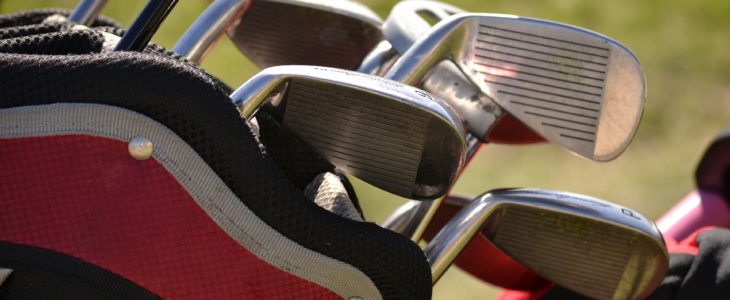Four P’s for Success
Preparation
Pure
Polish
Proven
In an effort to organize the game for a team of 10 as a college coach, I formulated The Code. Within The Code I generalized a few areas, outside striking the ball or playing the course, to assist each player in achieving success. Thus, the 4 P’s.
Let’s start with Preparation. We have:
Season Preparation
Tournament Preparation
Round Preparation
As we sit here today in mid-February we are in the area of Season Preparation. Season Preparation includes but not limited to the flowing:
You
Are you loose? Have you been stretching? We don’t play as often in November, December and January as other months. During those down months we often put on a few extra pounds, sit behind a desk a little more, and simply get tight. In an effort to get back into “swing” we can develop bad habits that could possibly last all season long. It’s important to get our bodies loose and back in groove of swinging properly before developing bad habits. One of the common swing mistakes I see in pre-season is a failure to setup with proper posture and a failure to finish the swing properly.
To knock the rust off I recommend a morning and evening stretching routine. If you go hit balls or play its imperative that you stretch, warm up and then hit vs hitting to warm up. Focusing on posture and finish is a good idea. We often cut our swings short, thereby losing speed, because aren’t loose enough to finish and carry the speed through the hitting zone. The orange whip is a fantastic tool for all golfers. Swinging the Orange Whip accomplishes many positives such as stretching, strengthening, proper rhythm and tempo as well as balance. Hank Haney has been a proponent of 100 practice swings a day. Well, how about 100 orange whip swings per day?
Making the disciplined effort to Prepare you, pre-season, can get you in proper mid-season form.
Your Bag
Often overlooked but crucial is preparing your bag. Have you inventoried your bag lately? There are items you might want on board during the un predictable weather months of late winter and early spring. Band –aids, pain reliever, tape, sun screen, chap stick, balls, gloves and tees are fairly obvious. What about handkerchiefs? Nothing like having your nose run all day long and have to wipe or blow on a golf towel. Your nose will be raw and miserable by days’ end. Always, always, always have a clean towel on board for your face and hands. Most of us will remember an umbrella but don’t forget your bag hood. Hand warmers, cart mitts, ear warming cap or band and a skull cap are easy to store in your bag.
Your Clubs
When was the last time you had your lies and lofts checked? Lies and lofts can get bumped off a little with regular play, bouncing or banging in vehicle or cart, or hitting off mats. It only takes 1 degree to miss the green with a full pitching wedge. Getting them checked is not difficult and provides peace of mind.
How are your grips? Have your clubs been sitting up for a while? Slick grips are a bad feeling. Grip pressure is big deal. Having clean or new grips can provide you with many swing benefits.
Your starting lineup- have you decided on the set makeup? Now is the time to work out your gaps, the top end or the bottom end of your bag. 3 wedges or 4? Hybrid or 5 wood? Is there a club in your bag you don’t like? Put it on the bench and find a starter that gives you confidence.
Grooves- how are the grooves in your wedges? Sharpening grooves can be done fairly easily with groove sharpener. I’ve found then online for about $10. Take care that you aren’t sharpening or reshaping to the point of non-conforming.
Your Apparel/Outerwear
Locate your warm, wet and windy outerwear, try on for fit and keep on a hanger in your vehicle or locker. I highly recommend finding the right combination of layers that will keep you warm without the bulk, before the season. I’ve often found myself running late due to trying on combinations or layers the morning of play. Preparing can save you an extra ten minutes and frustration as well as identifying what articles you need to fill in.
Your Practice
Are you in position to schedule your practice? If you are that’s great. If you are like most of us practice is more run and gun. That is, practice when you can or the opportunity presents itself. In either case planning your practice into segments will help you translate practice into play. Adding a quantitative element to your practice will prepare you for play on course. Hit 10 irons, wedges or drivers and try to score 7 out of 10 good ones. Get in the habit in pre-season of keeping score, even if its by yourself on the practice tee or short game area.
If on course practice is an option, take the pressure off in pre-season. Scramble three balls, take 5 mulligans per hole or play one tee up. The goal is to drive home from practice with confidence rather than defeat or negative thoughts.
On course practice is also a great time to chart your club yardages. Do you have a yardage chart? Wedge chart? Learn your numbers in preseason, many competitors wont, giving you an advantage.
Goals
What are your goals for the season? What are you wanting to achieve? Is it a desired handicap? A stroke average? Make the team? This is the time to set some challenging yet reachable goals.
Process goals are great for golfers. Practice short game a certain percentage of time, make 50 five footers at the end of every practice, nail down your pre shot routine, determining your pre round warm up routine that works for you, keeping your cool, hit 50 bunker shots each week, establish an alternate tee club other than driver, hit a dozen fairway bunker shots now and then… are all examples of how process goals and segmented practice can help you achieve your overall goals.
Coach
Do you have a coach or instructor to work with? Someone that understands your goals, someone who will be honest with you and someone you trust can be monumental in achieving your goals. This is the time to choose or visit with your instructor, discuss last year and what you want to improve upon. Schedule follow ups either as a conversation or a learning and training session
This is also the time to find a statistical program that can track your performance in key areas of the game. The data is very helpful to your instructor for improvement.
Lastly
Get off the range as often as possible. You can swing at home (100 per day) without a ball and do your swing some good.
Play holes and get into the routine of shot and target selection.
Short game, short game, short game.
A few drivers.
Short game, short game, short game.
Fill in your divots, repair ball marks, post your scores and tip the beverage cart ladies!
Enjoy the journey, Gj



